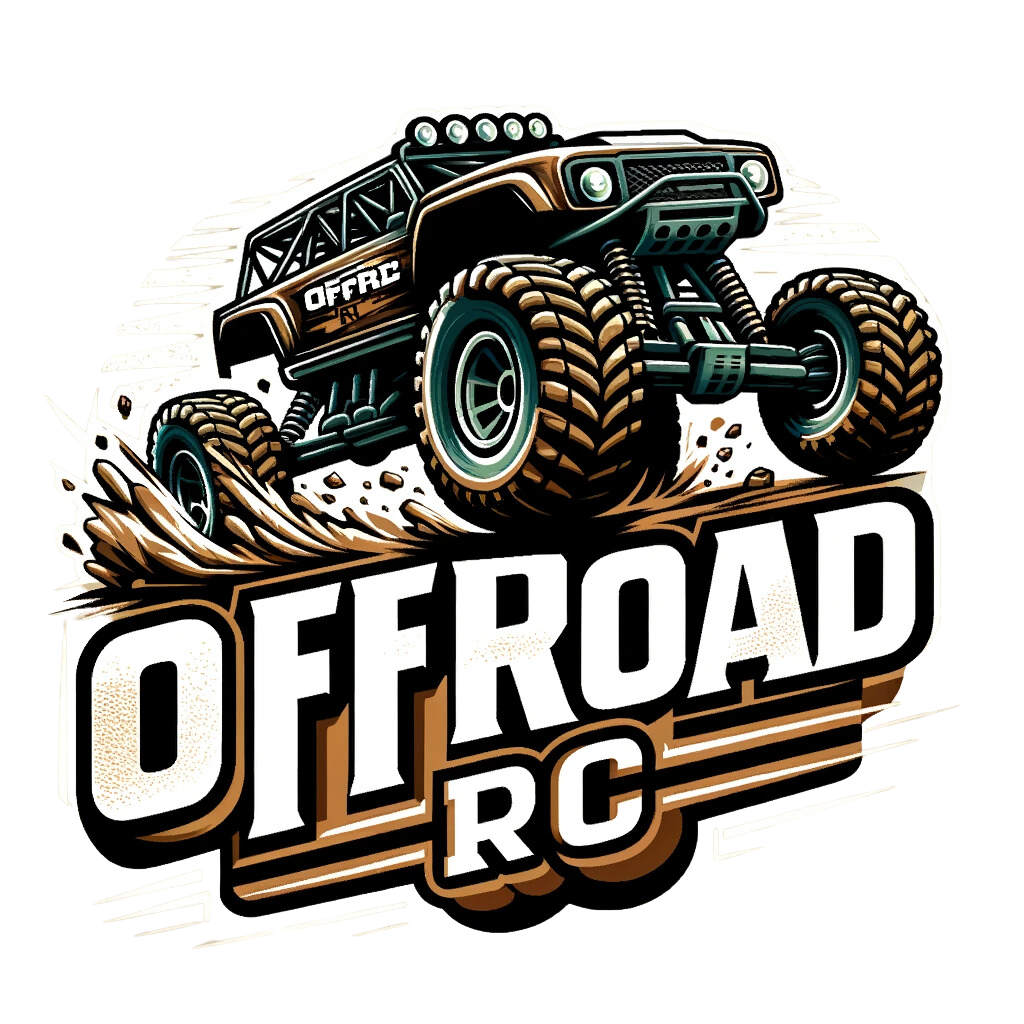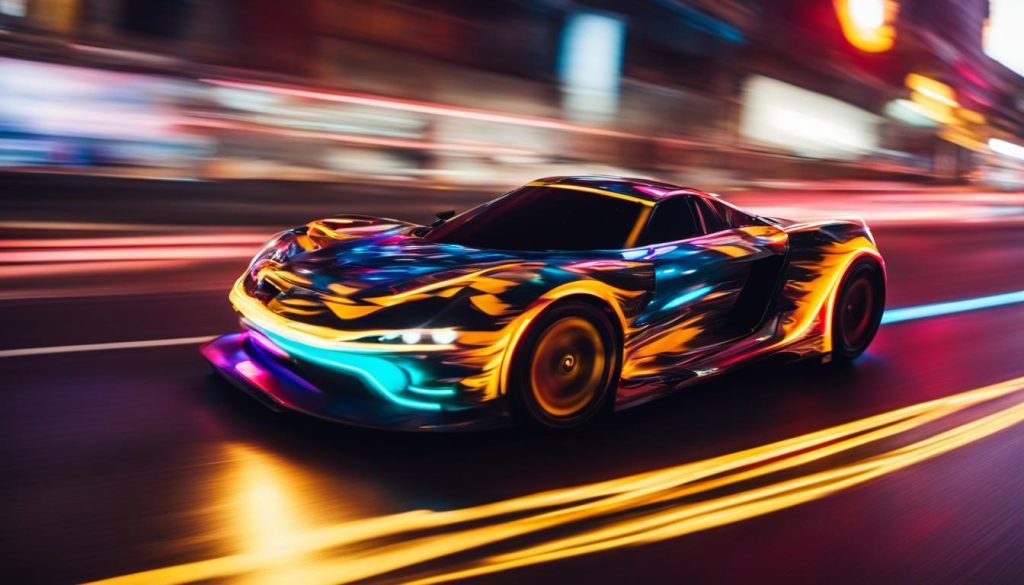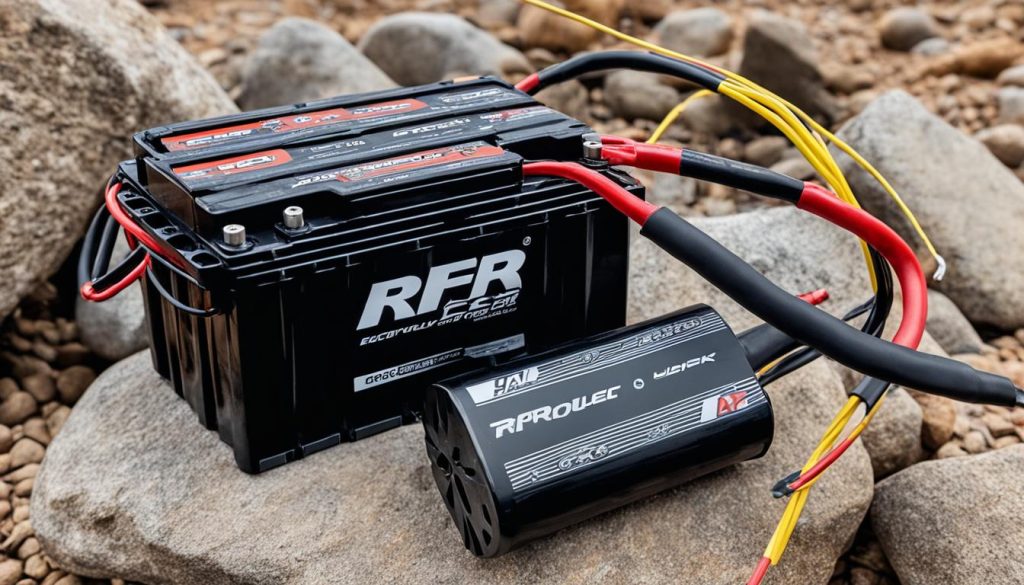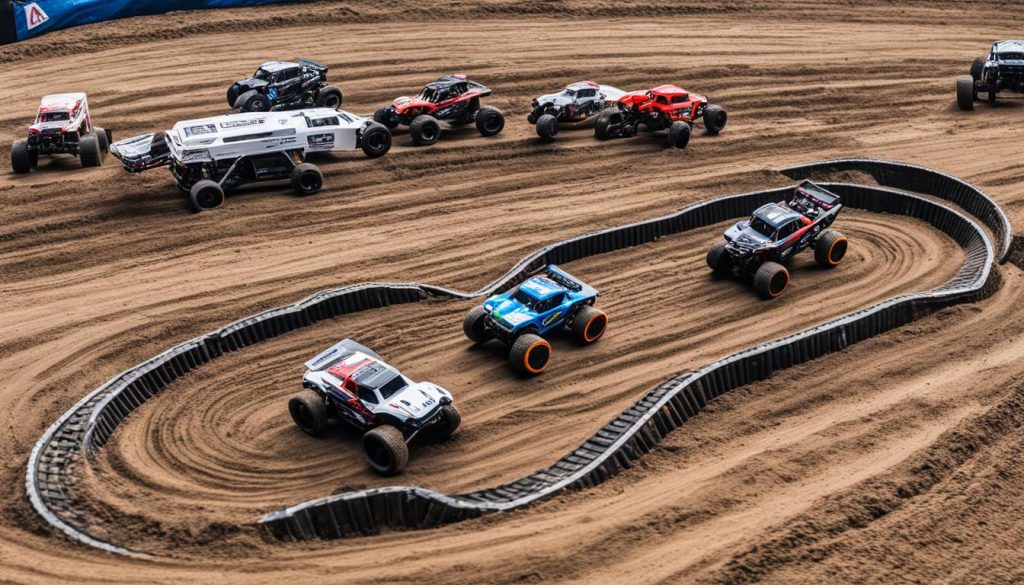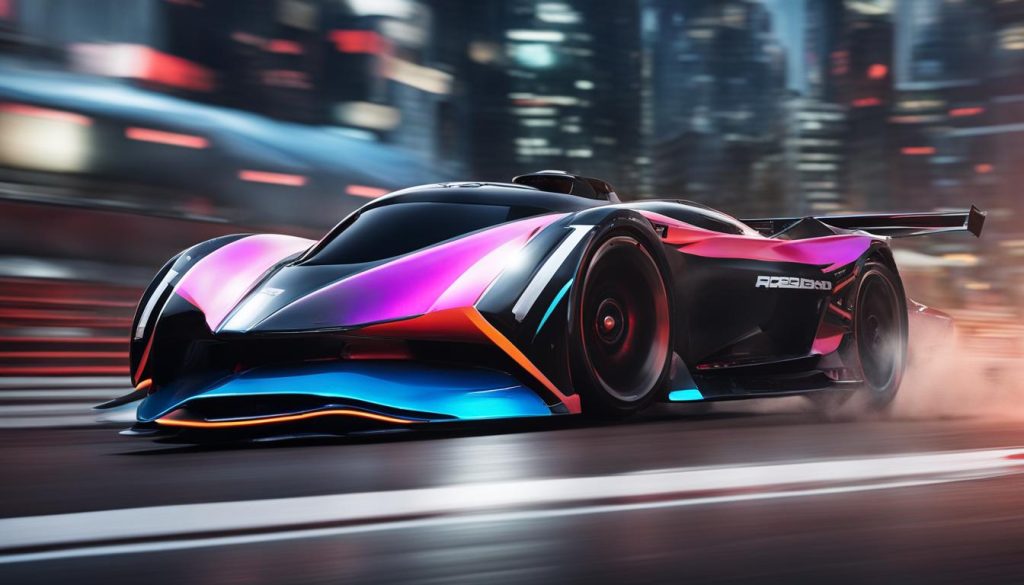If you’re curious about how fast a normal RC car can go, you’ve come to the right place. RC cars have come a long way in terms of speed and performance, offering exhilarating experiences for hobbyists of all ages. In this article, we will explore the average speed of RC cars, discuss the factors that affect their velocity, and provide tips for increasing their speed. Keep reading to quench your thirst for knowledge about these exciting vehicles!
Key Takeaways:
- RC cars have evolved to reach speeds of up to 70 miles per hour, and modified models can exceed 100 miles per hour.
- Scale speed refers to the ratio of an RC car’s speed to the speed of its full-size counterpart, while actual speed refers to the real speed at which the RC car can travel.
- Factors such as the size and weight of the car, type of tires, gears used, motor, and battery all influence the speed of an RC car.
- Modifying the gears, upgrading to a brushless motor, and using high-performance batteries are effective ways to increase the speed of an RC car.
- The fastest RC car on record is the electric-powered RC Bullet, which reached an astounding speed of 202.02 mph.
Understanding Scale Speed and Actual Speed
When it comes to RC cars, speed is an essential factor that captures the excitement of racing enthusiasts. But it’s not as simple as just knowing the top speed of a remote-controlled vehicle. There are two terms you need to be familiar with: scale speed and actual speed.
Scale speed refers to the ratio of the RC car’s speed to the speed of its full-size counterpart. It indicates how fast an RC car would move in comparison to the real car it is modeled after. For example, a 1:10 scale RC car would move at 1/10th the speed of the full-sized car. This scale factor is crucial to maintain realism and create a thrilling experience for hobbyists.
On the other hand, actual speed represents the real speed at which the RC car can travel, regardless of the scale. It is the measurement that matters most in terms of performance and competitiveness. While scale speed captures the essence of the real car’s motion, actual speed reflects the RC car’s capabilities in terms of velocity.
Understanding the difference between scale speed and actual speed is crucial when evaluating an RC car’s performance. While the scale speed may provide a realistic representation, the actual speed is what affects the car’s racing potential and overall enjoyment.
Factors Affecting RC Car Speed
When it comes to the speed of an RC car, multiple factors come into play. These factors can impact how fast your RC car can go and the overall performance it delivers. Understanding these key elements is essential to optimize your RC car for speed and maximize your racing experience.
Size and Weight
The size and weight of your RC car can have a significant influence on its speed. Larger RC cars tend to have more powerful motors, allowing them to achieve higher speeds. Additionally, a lighter car can accelerate faster and maintain higher velocities. It is important to consider the size and weight of your RC car when aiming for top speeds.
Type of Tires
The type of tires you use can also affect the speed of your RC car. Different tire patterns and compounds offer varying levels of traction and grip. Slick tires, for instance, are ideal for smooth surfaces and can provide higher speeds with reduced friction. On the other hand, spiked tires offer improved traction on off-road terrains, allowing you to navigate challenging surfaces without compromising speed.
Gears
The gears used in your RC car’s transmission system play a crucial role in determining its speed. Choosing the appropriate gear ratio can optimize your car for acceleration or top speed. If you want faster acceleration, opting for a smaller pinion gear and larger spur gear can deliver the desired outcome. On the contrary, using a larger pinion gear and smaller spur gear can improve top speed.
Motor
The type of motor you use can significantly impact your RC car’s speed. Brushed motors, commonly found in entry-level RC cars, offer a good balance of speed and affordability. However, upgrading to a brushless motor can provide a substantial boost in performance. Brushless motors produce less friction, resulting in higher speeds and improved efficiency.
Battery
The battery you choose for your RC car plays a crucial role in determining its speed. Upgrading to a high-performance battery, such as a LiPo (Lithium Polymer) battery, can provide higher voltage and better speed capabilities. LiPo batteries offer increased power output, allowing your RC car to reach higher velocities and maintain consistent performance throughout your racing sessions.
By considering these factors and making the necessary modifications to your RC car, you can push its speed limits and enjoy thrilling racing experiences. However, it is important to note that every RC car has its limitations based on its design and components.
Now that we have explored the various factors that affect RC car speed, it’s time to delve into some practical tips for increasing the speed of your RC car. Section 4 will provide you with valuable insights and strategies to optimize your RC car’s performance and unlock its full speed potential.
Tips for Increasing RC Car Speed
If you’re looking to increase the speed of your RC car, there are several modifications you can make to boost its performance. By focusing on gear modification, motor upgrades, and battery enhancements, you can unlock the full speed potential of your RC car.
Modify the Gears
One effective way to increase RC car speed is by modifying the gears. By choosing the right combination of pinion and spur gears, you can achieve faster acceleration or higher top speed. For faster acceleration, opt for the smallest pinion gear and the largest spur gear. On the other hand, if you’re aiming for higher top speed, go for the largest pinion gear and the smallest spur gear.
Upgrade the Motor
Another critical component that impacts RC car speed is the motor. Consider upgrading to a brushless motor, as they produce less friction and offer more power compared to brushed motors. The increased efficiency and power output of brushless motors can significantly enhance the speed and performance of your RC car.
Enhance the Battery
The battery plays a crucial role in determining the speed capabilities of your RC car. Consider upgrading from NiMH to LiPo batteries. LiPo batteries provide higher voltage, which translates to better speed and acceleration. Additionally, LiPo batteries have a higher energy density and offer longer run times, allowing you to enjoy extended high-speed RC car sessions.
| Gear Modification | Motor Upgrade | Battery Upgrade |
|---|---|---|
| Choose smallest pinion gear and largest spur gear for faster acceleration | Upgrade to a brushless motor for increased power and efficiency | Switch from NiMH to LiPo batteries for higher voltage and longer run times |
| Choose largest pinion gear and smallest spur gear for higher top speed |
By implementing these tips and modifications, you can take your RC car to new levels of speed and performance. However, always ensure you’re within the limits of your RC car’s capabilities and maintain safe driving practices.
RC Car Speed Records
When it comes to RC car speed, there are some incredible records that have been set by enthusiasts around the world. The electric-powered RC Bullet currently holds the title for the fastest RC car in the world, reaching a mind-blowing speed of 202.02 mph. This record-breaking RC car was custom-built and equipped with high-performance components, pushing the limits of what is possible in RC car speed.
While not all RC cars can reach such extreme speeds, there are still options available for hobbyists who want to experience the thrill of high-speed racing. By strategically modifying their RC cars, hobbyists can achieve speeds of 70 to 100 mph, delivering an exhilarating and adrenaline-pumping experience.
To give you an idea of the scale of these record-breaking speeds, take a look at the table below, which compares the fastest RC car speed with the top speeds of real cars:
| Record Speed | RC Car | Real Car |
|---|---|---|
| 202.02 mph | Electric-powered RC Bullet | Top speed of some supercars |
| 100 mph | Traxxas XO-1 | Top speed of some sports cars |
| 70-100 mph | Modified RC cars | Regular highway speeds |
As you can see, these speeds are truly impressive considering the small size of RC cars compared to full-sized vehicles. The advancements in RC car technology and the dedication of RC car enthusiasts continue to push the boundaries of speed and performance.
Importance of Terrain and Tire Selection
When it comes to the speed and performance of your RC car, the terrain you drive on plays a crucial role. Different types of terrain can either help you achieve maximum speed or slow you down. Additionally, choosing the right tires for the specific terrain can greatly improve speed and handling.
On smooth and flat surfaces, such as pavement or indoor tracks, you can expect your RC car to reach its maximum speed. The even surface allows for optimal traction and minimal resistance, enabling your car to reach higher velocities.
However, when driving on uneven or off-road terrain, such as gravel, grass, or dirt, the speed of your RC car may be significantly affected. These rough surfaces create more resistance and can cause your car to slow down or even become stuck. To overcome these challenges, it’s essential to choose the right tires.
The type of tires you select for your RC car depends on the terrain you’ll be driving on:
- Slick tires: These tires have a smooth rubber surface and are ideal for smooth, flat surfaces. They offer minimal resistance and allow for higher speeds and better maneuverability on paved tracks.
- Spiked tires: Designed with small spikes or knobs, these tires provide excellent grip on grassy or muddy terrain. They enhance traction and prevent slippage, allowing you to maintain better control and speed in off-road conditions.
By selecting the appropriate tires for your RC car’s terrain, you can optimize its speed and handling. Whether you’re racing on a track or exploring outdoor environments, the right tires will help you achieve the best performance.
Understanding the Limitations of 1/16 RC Cars
1/16 scale RC cars offer enthusiasts a smaller version of the popular hobby. However, it’s important to understand that these smaller cars have speed limitations compared to their larger counterparts. Due to their reduced size and weight, 1/16 scale RC cars face certain restrictions when it comes to reaching high speeds.
While these smaller RC cars can still achieve speeds of around 30 mph or more, their potential for higher speeds is limited. The components required for extremely high speeds, such as larger motors and batteries, tend to be too big or heavy to fit within the confines of a 1/16 scale car.
Despite these limitations, 1/16 scale RC cars still offer an exhilarating driving experience and are popular among hobbyists. Their smaller size allows for more precise control and maneuverability, making them ideal for indoor racing or tight outdoor tracks.
| Limitation | Explanation |
|---|---|
| Size | The smaller size of 1/16 scale RC cars limits the space available for high-performance components, hindering their ability to achieve faster speeds. |
| Weight | Lighter weight impacts the power-to-weight ratio of the RC car, which affects its overall speed potential. |
| Component Size | The components required for achieving extremely high speeds are often too big or heavy to fit within the smaller 1/16 scale cars. |
Despite these limitations, enthusiasts can still modify and optimize their 1/16 scale RC cars for improved speed and performance. Upgrading to high-performance motors, batteries, and tires can provide a noticeable boost in speed and acceleration. However, it’s essential to note that the speed increase may be limited by the size and weight constraints of the RC car.
Ultimately, the limitations of 1/16 scale RC cars in terms of speed are inherent due to their smaller design. However, these cars still offer plenty of fun and excitement for hobbyists looking for a more compact and agile driving experience.
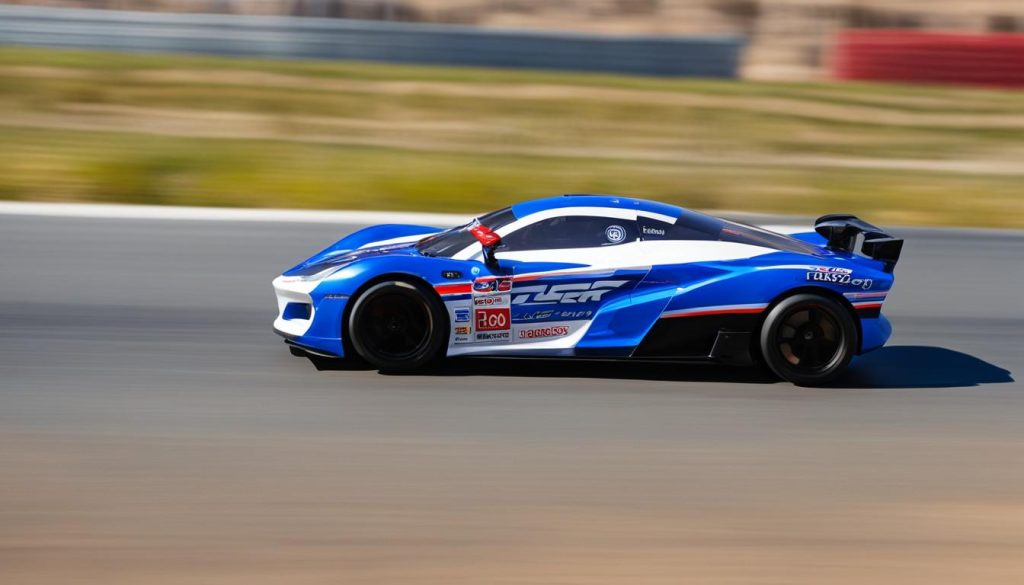
Modifying 1/16 RC Cars for Increased Speed
Despite the limitations of 1/16 scale RC cars, there are ways to enhance their speed through modifications. By upgrading various components, you can unlock the full potential of your 1/16 RC car and experience thrilling speed on the track.
Performance Upgrades
There are several key upgrades that can significantly improve the speed of your 1/16 RC car:
- Gear Upgrades: Upgrading to high-performance gears can enhance acceleration and top speed. Consider opting for gears with a higher tooth count for increased speed.
- Motor Upgrade: Switching to a brushless motor offers better efficiency and increased power output, resulting in improved speed and performance.
- Battery Upgrade: Upgrading from a nickel-metal hydride (NiMH) battery to a lithium polymer (LiPo) battery provides higher voltage levels and longer run times, enabling your RC car to achieve faster speeds.
- Tire Selection: Choosing the right tires for your RC car can greatly impact its speed and handling. Opt for tires with a lower profile and firmer compound for optimal speed on the track.
Remember that these modifications may require some technical expertise, so it’s advisable to consult with experienced hobbyists or seek professional assistance if needed.
| Performance Upgrade | Benefits |
|---|---|
| Gear Upgrades | Improved acceleration and top speed |
| Motor Upgrade | Enhanced power output and efficiency |
| Battery Upgrade | Higher voltage levels for increased speed and longer run times |
| Tire Selection | Optimal speed and handling on the track |
Pushing the Limits
While modifying your 1/16 RC car can significantly increase its speed, it’s important to be aware of the limitations of the car’s design. The smaller size and weight of 1/16 scale cars may restrict their maximum achievable speed when compared to larger-scale models.
However, by carefully selecting and implementing the right performance upgrades, you can push your 1/16 RC car closer to its full potential. Experimenting with different combinations of gear ratios, motor options, battery types, and tire selections can help you find the perfect balance of speed and handling for your RC car.
With the right modifications and upgrades, your 1/16 RC car can deliver an exhilarating and high-speed driving experience that rivals larger-scale models.
The Fastest RC Cars on the Market
While 1/16 scale RC cars have their limitations, there are larger scale RC cars available on the market that can reach much higher speeds. These high-speed RC cars are designed for maximum performance and are often preferred by experienced hobbyists and professional drivers.
One of the fastest RC cars available is the Traxxas XO-1. This powerhouse of a car can reach a staggering top speed of 100 mph, making it one of the fastest RC cars on the market. Its sleek design and powerful motor allow for thrilling high-speed races and adrenaline-filled stunts.
But the Traxxas XO-1 is just one example of the high-speed RC cars available. There are other brands and models that also offer impressive top speeds, such as the ARRMA Limitless, which can reach speeds of up to 100+ mph, and the Team Associated RC10 RC car, which boasts a top speed of around 70 mph.
| RC Car Model | Top Speed |
|---|---|
| Traxxas XO-1 | 100 mph |
| ARRMA Limitless | 100+ mph |
| Team Associated RC10 | 70 mph |
If you’re looking for thrills and high-speed action, these top speed RC cars are sure to deliver. However, keep in mind that these cars require experienced handling and may not be suitable for beginners. Always prioritize safety and proper driving techniques when unleashing the power of these high-speed RC cars.
Now, let’s dive deeper into the importance of terrain and tire selection for RC car speed in the next section.
Factors to Consider When Choosing an RC Car
When it comes to choosing an RC car, there are several factors to consider to ensure you make the right decision. By taking into account the following considerations, you can find an RC car that matches your speed preferences, size requirements, experience level, and budget.
RC Car Speed Considerations
The speed of an RC car is often a key concern for enthusiasts. If you crave high-speed thrills and want to experience the ultimate in RC performance, larger scale RC cars are generally more suitable. These models have the potential to reach higher speeds and offer a more intense driving experience. On the other hand, if you’re just starting out or prefer a slower pace, there are beginner-friendly options available that still provide plenty of enjoyment at lower speeds.
RC Car Size
Size matters when it comes to RC cars. Larger scale models not only have the potential for higher speeds, but they also tend to handle better and have more realistic features. However, smaller scale models have their advantages too. They are often more affordable, easier to transport, and can be driven in tighter spaces. Consider your available space, transportation needs, and personal preferences when deciding on the size of your RC car.
RC Car Experience Level
Your experience level with RC cars should also be taken into account. If you’re a beginner, it’s important to choose an RC car that is easy to control and forgiving of mistakes. Look for models with beginner-friendly features such as stability control systems or slower speed options. If you’re an experienced RC enthusiast, you may be more comfortable with advanced features and higher-performance models that require more skill to operate.
RC Car Budget
Your budget plays a significant role in determining your options for an RC car. There is a wide range of prices available, from budget-friendly entry-level models to high-end professional-grade RC cars. Set a budget that aligns with your financial capabilities and explore the range of options within that budget. Remember to account for additional costs like batteries, chargers, and spare parts when planning your RC car purchase.
Comparison Table: Choosing an RC Car
| Factor | Consideration |
|---|---|
| Speed | Choose based on preferred speed level: higher speeds for larger scale RC cars, slower speeds for beginner-friendly models. |
| Size | Consider available space, transportation needs, and personal preferences. |
| Experience Level | Select an RC car that matches your skill level, whether you’re a beginner or an experienced enthusiast. |
| Budget | Set a budget and explore RC cars within that range, accounting for additional costs. |
Take your time to evaluate these factors and weigh your options before making a decision. By considering the speed, size, experience level, and budget, you can find the perfect RC car that will provide hours of exhilarating fun and meet your specific needs.
Future Developments in RC Car Speed
As technology continues to advance, we can expect exciting developments in the future of RC car speed. Manufacturers are constantly pushing the boundaries of RC car technology, striving to enhance performance and provide enthusiasts with increasingly thrilling experiences. Several key areas of focus for future advancements include:
- More Efficient Motors: Manufacturers are investing in research and development to create motors that are even more powerful and efficient. These motors will deliver increased torque and acceleration, allowing RC cars to achieve higher speeds.
- Better Battery Technology: Advancements in battery technology will revolutionize the RC car industry, providing longer run times and quicker charging capabilities. High-performance batteries will offer significant power outputs, enabling RC cars to reach new levels of speed and performance.
- Lightweight Materials: The use of lightweight materials, such as carbon fiber and advanced composites, will continue to gain popularity. These materials offer strength and durability while reducing overall weight, allowing RC cars to move faster and maneuver with greater agility.
With these advancements on the horizon, the future of RC car speed looks incredibly promising. Enthusiasts can look forward to faster, more powerful RC cars that deliver exhilarating speeds and heart-pumping excitement.
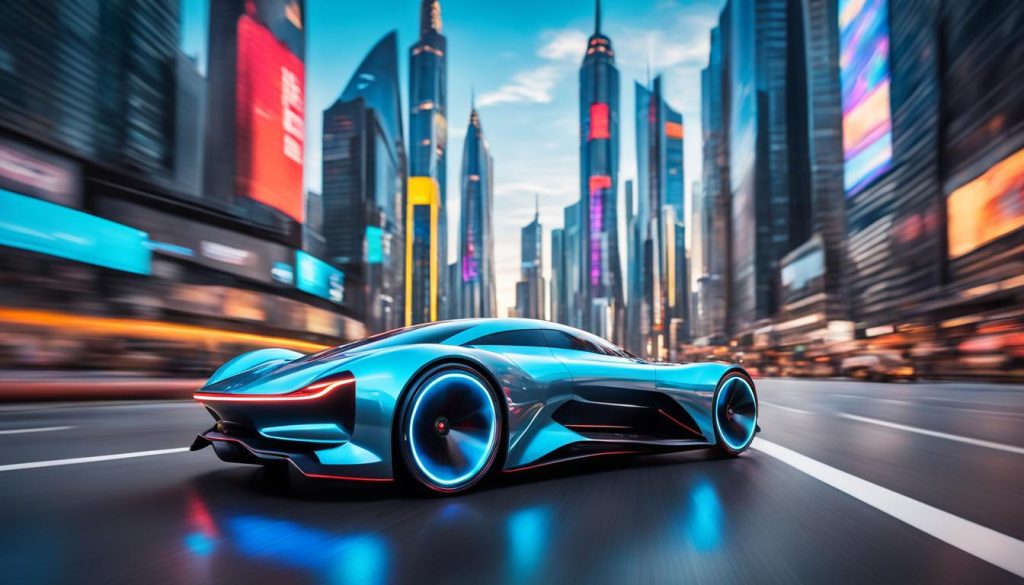
Conclusion
In summary, RC cars offer a wide range of speed options to cater to different preferences and skill levels. From 1/16 scale cars with speeds of around 30 mph to specialized high-speed models exceeding 100 mph, there is an RC car to suit every enthusiast. The speed of an RC car is influenced by various factors, including size, tires, gears, motor, and battery.
Modifying these components can enhance an RC car’s speed, but it’s important to note that there are limitations based on the car’s design. While some RC cars can reach incredible speeds with the right modifications, others may have inherent limitations that prevent them from achieving the same level of performance.
Ultimately, the speed of an RC car is a personal choice that depends on individual preferences, experience level, and budget. Whether you’re a beginner looking for an enjoyable driving experience or a seasoned professional seeking the thrill of high-speed races, there is an RC car out there for you. Consider the factors discussed in this article and make an informed decision to find the RC car that meets your speed needs.
FAQ
How fast is a normal RC car?
The speed of a normal RC car can vary, but on average, they can reach speeds of around 30 to 70 miles per hour.
What is scale speed?
Scale speed refers to the ratio of an RC car’s speed to the speed of its full-size counterpart. For example, a 1:10 scale RC car would move at 1/10th the speed of the real car it is modeled after.
How can I increase the speed of my RC car?
To increase the speed of your RC car, consider modifying the gears, upgrading to a brushless motor, and using a high-performance battery. These modifications can improve acceleration and top speed.
What is the fastest RC car in the world?
The current record for the fastest RC car is held by the electric-powered RC Bullet, which reached a speed of 202.02 mph.
Does the terrain affect an RC car’s speed?
Yes, the terrain can significantly impact an RC car’s speed. Smooth, flat surfaces are ideal for maximum speed, while uneven and off-road terrain may slow the car down.
Can 1/16 scale RC cars reach high speeds?
1/16 scale RC cars have limitations when it comes to speed due to their smaller size and weight. While these cars can still reach speeds of around 30 mph or more, larger scale RC cars have the potential to achieve higher speeds.
How can I modify a 1/16 RC car to increase its speed?
You can modify a 1/16 RC car for increased speed by upgrading the gears, motor, battery, and tires. Choosing the right accessories and components, such as a brushless motor and LiPo batteries, can help push the speed of a 1/16 RC car closer to its maximum potential.
What are the fastest RC cars on the market?
There are several high-speed RC cars on the market designed for maximum performance. The Traxxas XO-1, for example, can reach a staggering 100 mph.
What factors should I consider when choosing an RC car?
When choosing an RC car, consider factors such as speed, size, personal experience level, and budget. Larger scale RC cars tend to offer higher speeds, while beginner-friendly models provide enjoyable driving experiences at lower speeds.
What are the future developments in RC car speed?
As technology continues to advance, we can expect further improvements in RC car speed. Manufacturers are constantly developing new components and technologies, such as more efficient motors, better battery technology, and lightweight materials, to enhance performance.
